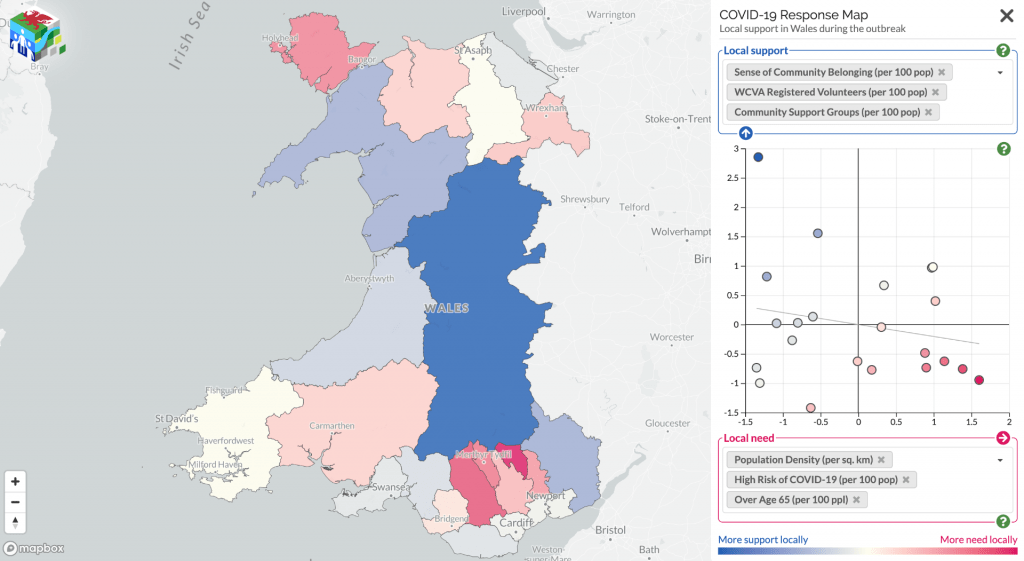Dr Oliver Davis, Nina Di Cara, and the project team
Follow Oliver, Valerio, Alastair, Nina, Chris Benjamin and Public Health Wales Research & Evaluation on Twitter
Since the pandemic started, communities have been mobilising to help each other; from shopping for elderly neighbours, to offering to offering a friendly face or other support. Mutual aid networks have sprung up all over the country, and neighbours who hadn’t previously spoken have been introduced to each other via street–level WhatsApp groups. But the degree to which offers of help are matching up with the need for help has been unknown, and this poses a problem for organisations who need to make decisions about where they should target limited resources.

Ensuring support is available where needed
Community support can offer a protective factor against adverse events. Some areas are more vulnerable than others, but knowing which areas are most likely to have a mismatch between support needed and support offered is difficult. To address this issue, a collaboration between the Public Health Wales Research & Evaluation Division and the Dynamic Genetics lab, part of the MRC Integrative Epidemiology Unit at the University of Bristol and supported by the Alan Turing Institute, has mapped these support offers and needs.
Using data from Wales Council for Voluntary Action, COVID-19 Mutual Aid, Welsh Government Statistics and Research, the Office for National Statistics, and social media the project team have created a live map that highlights the areas where further support for communities may be needed. It shows data on support factors, such as number of registered volunteers and population density, against risks, such as demographics, levels of deprivation, and internet access. It aims to inform the responses of national and local government, as well as support providers in Wales.
The site also provides the links to local community groups identified helping to raise awareness of the support available locally.
This map is part of an effort to better understand which communities have better community cohesion and organisation. We are keen to find out your views on how this can be more useful, or other community mobilisation data sources which could be included. Please contact Oliver or Nina with your comments:
Dr Oliver Davis: oliver.davis@bristol.ac.uk
Nina Di Cara nina.dicara@bristol.ac.uk
Further information
- If you are a community group and want to be included, please register your group with Covid-19 Mutual Aid (https://covidmutualaid.org/).
- The code used to create the map has been released openly on GitHub (https://github.com/DynamicGenetics/COVID-19-Community-Response) so that it can be reproduced. Full information on the sources of data on vulnerability and community support are documented on the Open Science Framework (https://osf.io/c48hw/) and the map will be updated as new information becomes available.

